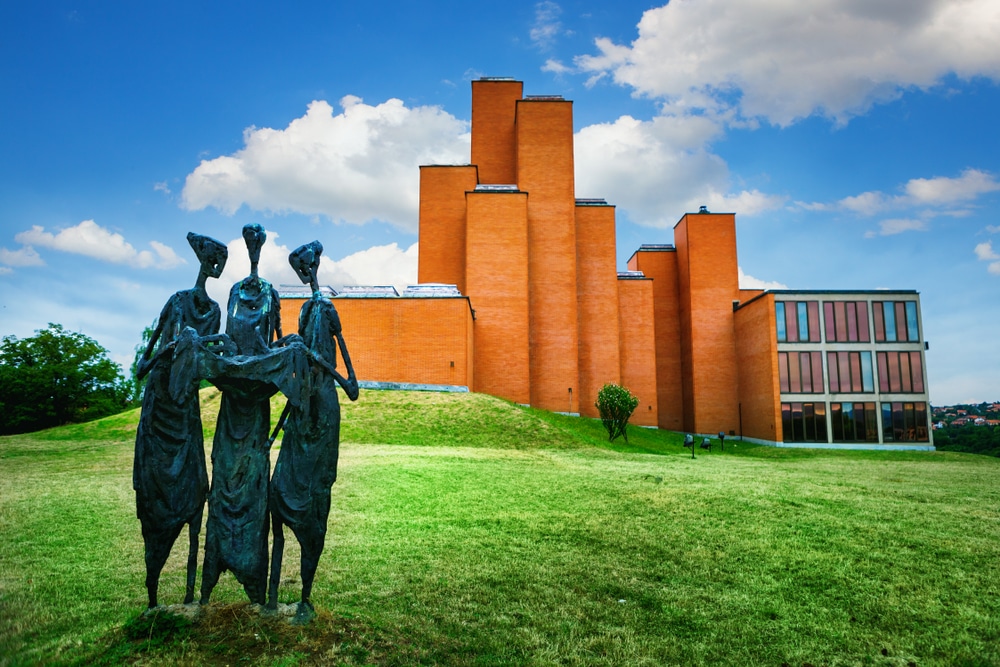
Kragujevac is the centre of Šumadija and Pomoravlje and the neighbouring regions in terms of economy, culture, education, healthcare and politics. With over 180,000 residents, it is the fourth largest city in Serbia.
Situated in the heart of both Serbia and the Šumadija region, it covers an area of 835 km2 and has 57 populated areas and 78 self-governing local communities. Built on the banks of the Lepenica river in the Kragujevac basin, it touches the fringes of the Rudnik, Crni Vrh and Gledić mountains.
Its average height above sea-level is 180 m and the city has a moderate continental climate. Šumadija is characterised by its hilly terrain and gentle rolling slopes. The region got its name from when the area was rich in forests (šuma means forest in Serbian), which today cover a quarter of the total area.
The city was first mentioned in 1476 as a small settlement with 32 houses. Kragujevac was built on the banks of the Lepenica river, on the slopes of the Rudnik, Crni Vrh and Gledić mountains. The many waterways played a significant role in the decision to found the settlement here. The Lepenica river flows through the town centre where there are also a number of its tributaries. Roads connecting Gruža, Lepenica and Rudnik with the Pomoravlje region used to run through the valleys of the tributaries of the Lepenica river.
When Prince Miloš Obrenović restored the Serbian state, having liberated it from the Turks in 1818, he proclaimed Kragujevac its capital. In 1822, Kragujevac had 283 houses and 2,000 residents. Kragujevac became particularly important with the founding of the Cannon Foundry (Topolivnica) which later grew into the Army Technical Institute (the forerunner of the Zastava car plant). Kragujevac boasts many Serbian ‘firsts’: it was the first capital (1818) and was home to the first court – known as the Serbska Kancelarija (1820), the first grammar school (1833), the first theatre – the Serbian Court Theatre (1835), the first university – the ‘Licej’ (1838), the first cast cannons (1853) and the first electric power plant (1884). Kragujevac is home to institutions of regional and national importance, and several of them continue the tradition of being the first institutions of their kind in Serbia: the Joakim Vujić Theatre (1835), the Vuk Karadžić National Library (1866) and the Abrašević Cultural and Artistic Society (1904).
The Kragujevac National Museum has departments devoted to archaeology (with over 100,000 exhibits), fine art (with around 1,000 works), and the ethnography and history of Kragujevac and Šumadija. The Old Foundry Museum presents a century and a half of industrial growth in Kragujevac and Serbia. Of the many sites of cultural and historical interest in Kragujevac, of special note are the Old Church (Stara Crkva), the endowment of Prince Miloš Obrenović, built in 1818, the Principality of Serbia Assembly building, the Palace of Prince Miloš, the Courthouse, the Amidža Konak, the First Grammar School and the Kragujevac October Memorial Park.
Many cultural events are held in Kragujevac, the most important being OKTOH, the International Anti-War Cartoon Salon, the International Festival of Chamber Choirs, the Folklore Showcase, Jazz Fest and the Joakim Fest Serbian theatre festival.
Kragujevac Aquarium, the first freshwater aquarium in Serbia, is a special attraction housed in the Faculty of Science. The 200 m2 exhibit has over 250 tanks on display, showcasing the living worlds of the continental waters of the Balkans, as well as tropical and subtropical regions.
